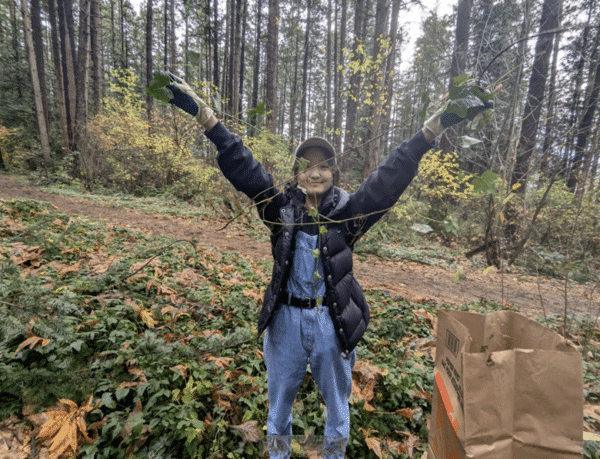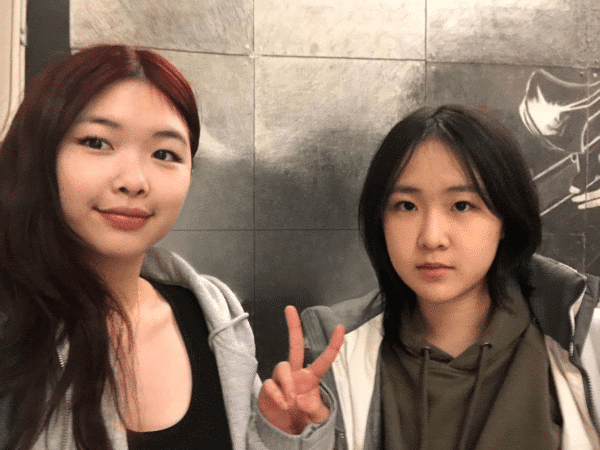By Alex Mutch| March 27, 2024
On Saturday February 3rd youth volunteers from across Canada assembled in Ottawa to present and discuss community projects piloted in a Nationwide Youth Showcase. This was a unique experience connecting like-minded individuals across the country. Volunteer projects ranged in complexity, scale, and topic – from designing informational signage on invasive species to reducing invasives in their local communities. During each presentation, volunteers stood ready to share their stories with incredible passion and professionalism.
We’d like to highlight a few of these youth below.
Several volunteers designed projects around pollinators in their communities, from bats to bees. Emma Gaudreault focused her project on bats, installing shelters known as bat boxes in Kamloops. Bats are an essential part of the ecosystem. Their populations are currently at risk due to climate change and invasive species, such as the fungus causing white-nose syndrome.
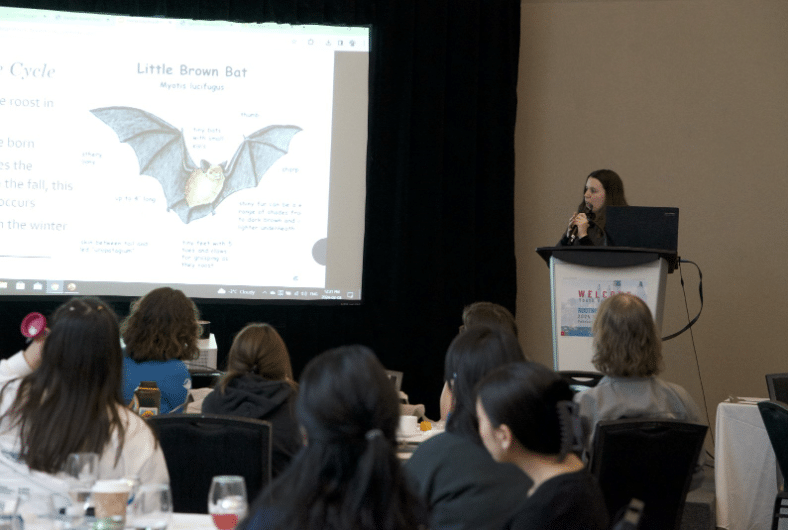
Current UBC student Annie Wang noticed her campus needed more garden spaces to encourage pollinators to visit and do their important environmental work. The Healthy Habitats community service grant program helped her find the solution to cultivate those spaces.

Emily Everest plans to bring her pollinator garden to life at the University of Waterloo. During the winter months Emily has been planning extensively for her garden and planting is scheduled to start early this spring! From coast to coast, youth volunteers are helping pollinators thrive for generations to come.
Removing invasives can be a challenging task, but determined volunteers are helping restore the natural spaces they hold dear. Off the coast of Vancouver Island on the Trial Islands, John Kang focuses on removing English Ivy, organizing events, and encouraging others to join removal efforts to restore the islands to their original state.
Emma Stroud is tackling Yellow clematis in Calgary parks. Involved in over 20 removal projects around the city, Emma hopes to continue finding innovative ways to catch these fluffy seedhead invasives.
Aisha Adelah hopes to free the South Saskatchewan River Valley from invasives, by mapping out, reporting, and removing invasive species concentrated in specific areas. To ensure a long-lasting effort, Aisha also wants to spread awareness of control measures and involve nearby communities.
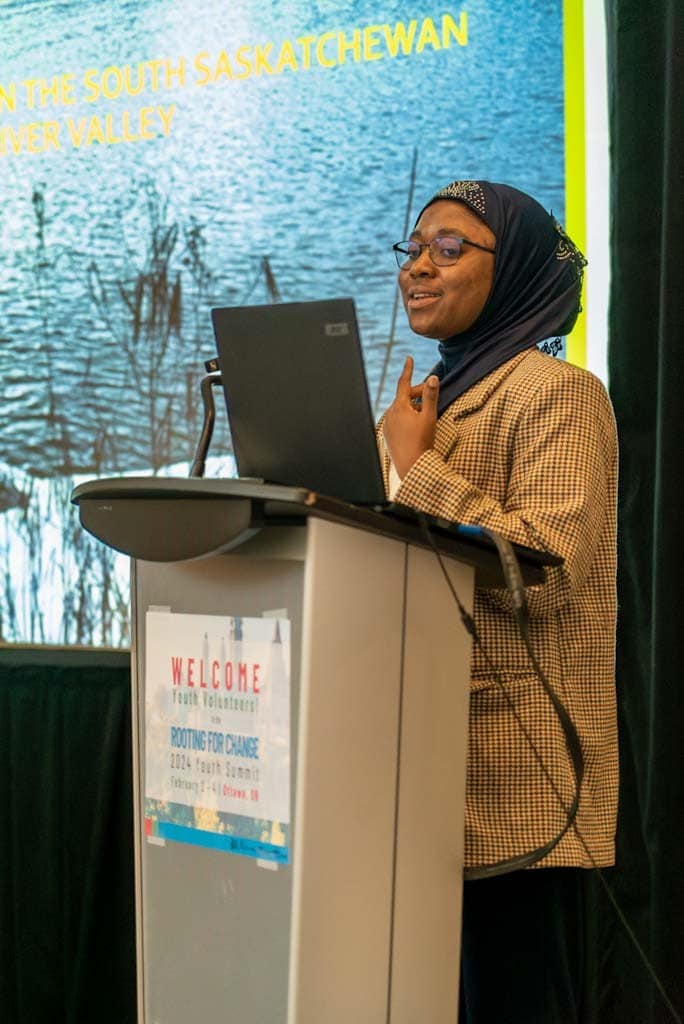
one of Canada’s most important rivers. Credit: K. Faridani
Aquariums are mesmerizing, and Anabella Perez is hoping to build her own! Her project promoting the Don’t Let it Loose campaign will be displayed at Providence University College in Manitoba. She plans to keep Goldfish in the aquarium and her educational poster will highlight the impacts of non-native aquatic species on the broader biosphere. Anabella hopes her project will help reduce the number of pet fish released into Canadian waterways.
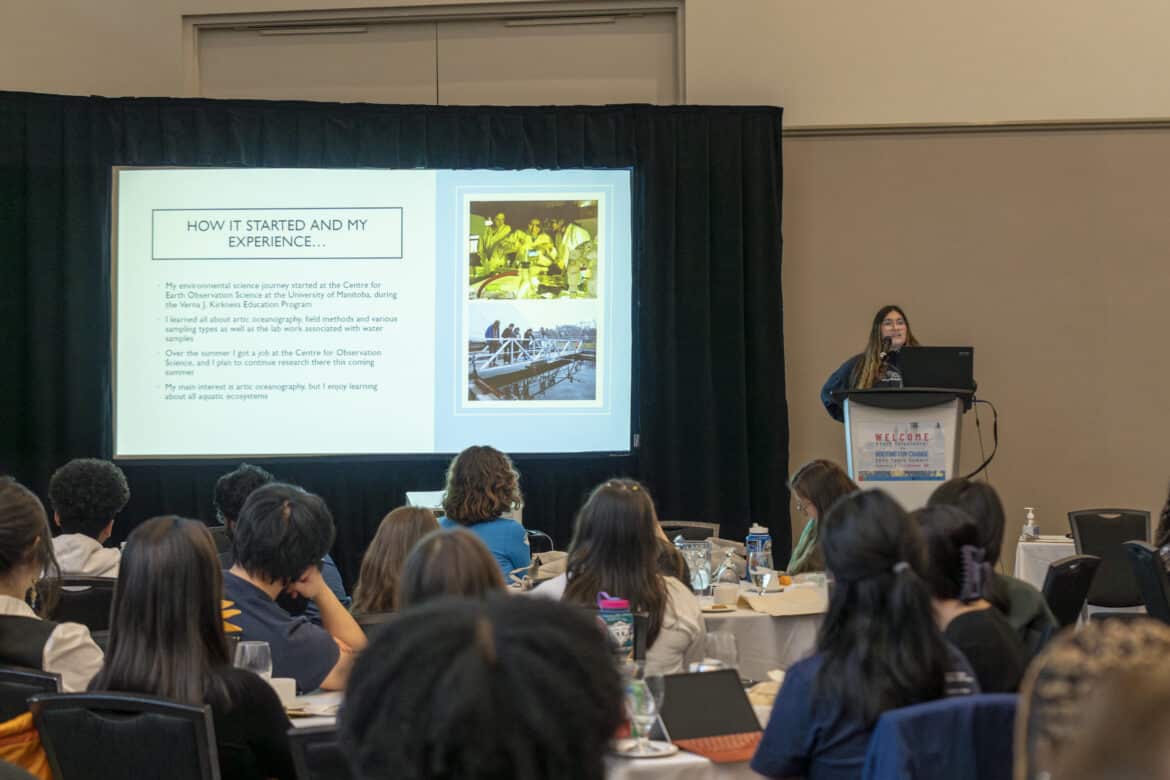
Seth Tagle used his political science education and knowledge to create a public policy analysis in New Brunswick. Seth analyzed the provincial government’s programs on Invasive Management compared to other jurisdictions across Canada and the United States to see how New Brunswick’s policies stack up.
All of these projects require a tremendous amount of work, but every hour, event and participant invested helps safeguard the irreplaceable value of nature.
Since future generations will inherit the battle against invasive species, we must invest in our future by empowering the Youth of Today. Throughout these captivating presentations, the focus was clear: spreading awareness is critical for future invasive species management. As the Youth Program marches forward, it will continue to inspire youth, forge new friendships, and most importantly spread the word, not invasive species!
Alex Mutch is a youth engagement coordinator at ISCBC. He values inclusivity and strives to create equitable and inviting environments in all the communities he is a part of. In his spare time, Alex enjoys playing volleyball, hiking, reading, and solving Rubik’s cubes. You can reach Alex at amutch@bcinvasives.ca.
Share



